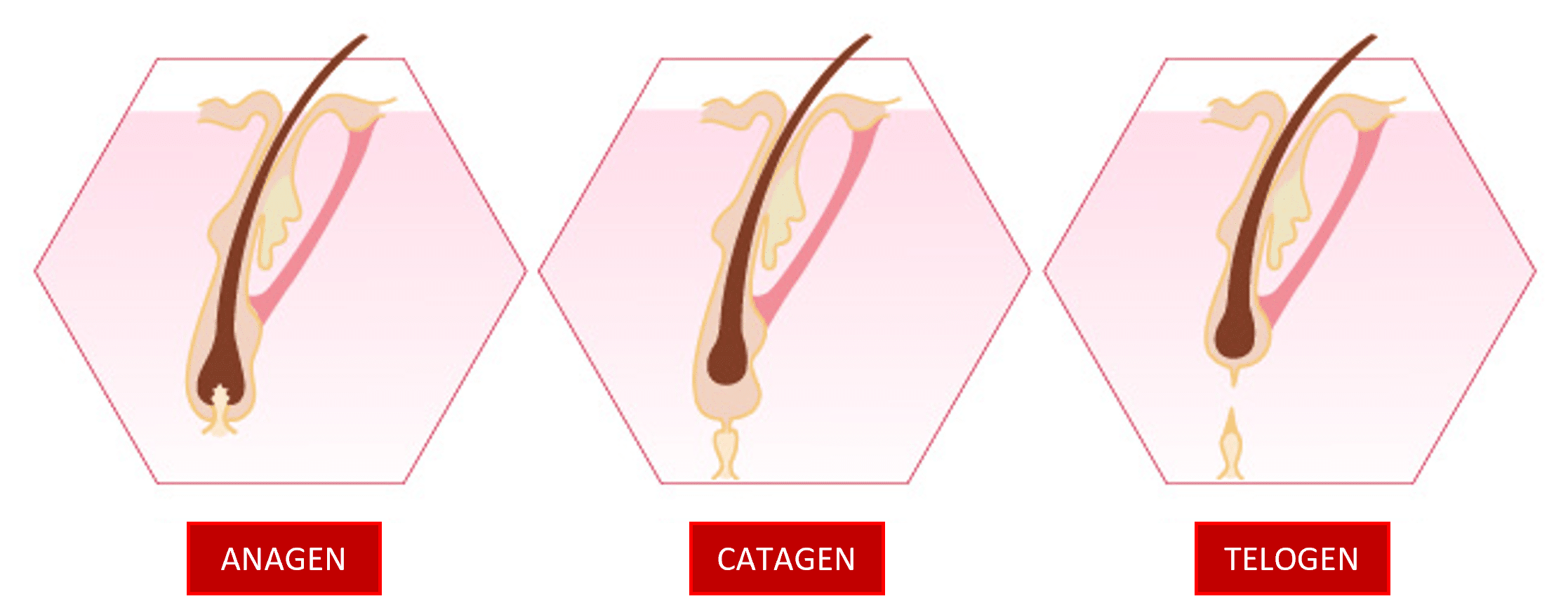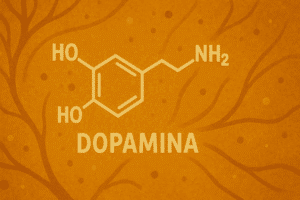What is alopecia areata?

Alopecia areata is an autoimmune disorder in which the immune system attacks the hair follicle. It is the most common autoimmune disorder worldwide.
Types of alopecia areata
The most striking case of alopecia areata is the loss of hair all over the body (including eyebrows). However, it is not the only type of alopecia areata that exists. There are different types depending on where and how the hair loss occurs.
- Patchy: loss of scalp hair in the form of multiple patches.
- Total alopecia: total or almost total loss of hair from the scalp.
- Generalised: total or almost total hair loss all over the body.
- Diffuse or incognito alopecia: total and diffuse hair loss over the entire scalp. These are short, miniaturised hairs that grow back.
- Ophiiasis: hair loss around the head in the form of a band.
- Sisaipho: extensive alopecia, except on the periphery of the scalp.
- Alopecia barbae: bald patches in the beard.
- Alopecia barbae: bald spots on the beard
Differences with androgenic alopecia (Pattern baldness)
The main difference between both types of alopecia is its cause. Alopecia areata is due to destruction of the hair follicles by the immune system, while androgenic alopecia (common baldness) is due to changes in the life cycle of the hair as a result of hormones that act on hair follicles genetically predisposed to baldness.
The male hormones (androgens, such as testosterone and dihydrotestosterone present in both males and females) regulate hair growth. Testosterone stimulates pubic and armpit hair growth while dihydrotestosterone stimulates beard hair growth and scalp hair loss.
Hair growth phases
Hair growth begins under the skin in structures called follicles. Each follicle produces a new hair with a 3 phases life cycle.
1- Anagen or growth phase
In the case of eyebrows and eyelashes, this phase lasts from 1 to 6 months and in the case of scalp hair, the phase is longer and can last up to 6 years. Hair grows about one centimeter each month.
2- Catagen or transition phase
The hair stops growing and separates from the papilla due to the inactivity of the follicle cells. This phase usually lasts about four weeks.
3- Telogen or resting phase
When this phase ends, the hair falls out and a new lifecycle begins. The duration of this phase is approximately 3 months and everyday we lose about 50-100 hairs from the scalp that are replaced by other hairs that begin the growth phase.

Alopecia Areata
Alopecia areata has a genetic component. Genetic variants associated with a heightened immune response and susceptibility to autoimmune diseases increase the relative risk of alopecia areata. Therefore, we could say that alopecia areata is a combination of environmental triggers and genetic susceptibility.
Normally, hair follicles have immune privilege . This term means that the immune system does not see the hair follicle. It is as if they have an invisibility cloak against immune system cells.
This invisibility cloak is not exclusive to the follicles. The immunologically privileged sites of our body are eyes, brain, testicles, placenta and fetus. This occurs only at sites where an immune response could be fatal. It is a protection mechanism from the potentially damaging effects of an inflammatory immune response on vital structures.
If we take a global view of hair and think beyond our own hair, it makes sense that at the evolutionary level hair follicles have immune privilege, since, for most mammals, hair maintenance is a survival factor that it needs to be protected even when there is a wound.
In alopecia areata, the immune privilege of the hair follicle disappears leading to infiltration of white blood cells (T cells) and cell death (apoptosis) of the hair follicle causing hair loss.
Small genetic touches
If we go into the purely genetic part, gene expression analyses in people with alopecia areata show that there is indeed a relevant expression in immune cell genes (as IL-21, IL2, IL13 and HLA-DQ) and hair follicle (as BCL2- like 11).
Genes IL encode the information from the interleukins that regulate the immune system together with the gene HLA. Each gene HLA has many different variations, allowing the immune system to react to a wide range of foreign proteins. However, certain variations in the genes HLA contribute to an inappropriate immune response directed at the hair follicles resulting in alopecia areata.
The genomic region 2q13 contains the following genes ACOXL and BCL2L11. The BCL2-like 11 also known as BIM acts as pro-apoptotic factor (responsible for cell death). In a "normal" situation, BIM is largely expressed in the hair follicle bulb in a pattern surprisingly restricted to the catagen phase (when the hair stops growing) but not to the anagen or telogen phase.
Androgenic Alopecia
The Androgenetic alopecia or common baldness have a mainly genetic origin, although it can also be hormonal. This genetic origin is primarily and originally attributed to maternal genetics. However, it has been shown that the complexity is much greater and that in the most cases It's about a hormonal component that acts on hair follicles genetically predisposed to baldness provokingprogressively a atrophy of the same until the complete disappearance of the hair.
The main responsible is the gene AR which provides instructions for making a protein called androgen receptor to which androgens (testosterone or dihydrotestosterone) bind. In addition to playing a key role in regulating hair growth, androgens are important for male sexual development.
Studies suggest that variations in the gene AR lead to increased activity of androgen receptors in hair follicles. The increased androgen levels in the hair follicles can lead to a shorter hair growth cycle and to the growth of shorter and finer locks as well as a delay in the growth of new hair to replace those that are shed.
Lifestyle habits with possible impact on alopecia areata
Like all other diseases, genetics loads the gun, but environment pulls the trigger. That is why it is vitally important to know which lifestyles enhance the development of this autoimmune disease and which ones can be beneficial.
Harmful lifestyle habits
- Smoke activates the cells of the immune system.
- Obesity causes a 15% increase in the risk of alopecia areata.
- The obesity 15% causes an increased risk of alopecia areata.
- The stress increases the risk of alopecia areata.

Beneficial lifestyle habits
- Vitamin A: excess retinoic acid (a derivative of vitamin A) is related to alopecia. Vitamin A is needed in the right amount.
- Vitamin D: important in the modulation of the immune response.
- Zinc: One study found that people with alopecia areata had lower blood levels of zinc than people without the disease.
- Quercetin: is an anti-inflammatory herbal supplement that decreases TNF-alpha (involved in the immune response). A mouse model of alopecia areata showed that quercetin stopped hair loss.
Successfull case due to changes in habits – Alopecia areata
As proof of all the information collected, we leave you a real case of an 8-year-old boy with alopecia areata who showed that thanks to the introduction of several changes in the diet he presented a complete remission of the alopecia. Dietary changes included eating unrefined foods, vitamin A, D, zinc, and fish oil (omega 3) supplements.
Discover with the dna testing of ADNTRO, or uploading your RAW DNA datayour genetic predisposition to suffer from alopecia areata plus how to customize your diet to reach your optimal levels of vitamins and minerals (vitamin A, D and Zinc between them) depending on your genetic variants.
And remember, any changes you make related to conditions you may have, should always be done under medical supervision. This article is merely informative.














